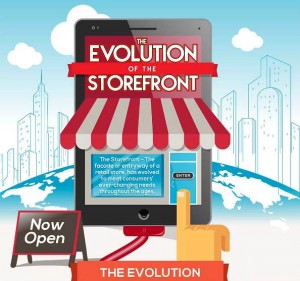It’s been three years since the Supreme Court of the United States issued the groundbreaking decision in South Dakota v. Wayfair, Inc — making it possible for authorities to collect sales tax on remote sales in their state regardless of the physical location of the seller. Even though remote sales tax laws have been a reality for several years, a poll of attendees during Avalara’s annual CRUSH conference in May found that many businesses are still learning how to manage the increased complexity that economic nexus laws have unlocked. At the same time, shifts in global commerce driven by the pandemic and ongoing changes in tax obligations continue to move the finish line for compliance further away for many businesses.
As we look back on three years of remote sales tax laws in the U.S., we see that there are several trends impacting businesses when it comes to managing compliance and the associated complexity.
Economic nexus buoyed sales tax collections during pandemic
Last year, at the onset of the COVID-19 pandemic, many state tax officials braced for a major hit to state revenues and anticipated that their budgets would be overwhelmingly impacted — and rightfully so. Many states experienced a drop in revenue in Q2 after businesses were forced to close their doors to slow the spread of COVID-19, so the outlook for state revenues was not optimistic as income tax due dates were pushed back, sales tax payments delayed, and other tax relief measures contributed to budget concerns in 2020.
However, according to a survey of state department of revenue leaders funded by Avalara and conducted by the Urban-Brooking Tax Policy Center, most states are in a better position than originally expected just a year ago. Interestingly, the survey indicated that many states believe that revenue from taxing online sales has helped revenue numbers, but many states would need more data to be certain. Similarly, when comparing overall state tax revenue data from April to December 2020 collected by the Urban-Brookings Tax Policy Center with Avalara’s sales and use tax returns data from the same period, there is a direct correlation between states with the highest state tax revenue increases and those with the highest sales and use tax remittance. For example, Idaho saw the highest increase in state tax revenue at 10.4% and was among the top states for growth in sales and use tax remittance at 44%.
There have been numerous examples over the past year that illustrate the positive impact remote sales tax collections have had on revenues. States like Colorado and Kansas have boasted increases in revenues from remote sales tax collections.
More channels means more complexity
Although remote sales tax laws have existed since the Wayfair decision in 2018, tax complexity for businesses has also compounded as consumer behavior has shifted in recent years. Most recently, the pandemic sparked a rapid shift in consumer behavior as in-person shopping came to a halt and commerce was pushed online. As a result, many businesses now operate in an omnichannel format — selling to customers across a mix of online and in-person channels. Thanks in part to remote sales tax laws, selling across multiple channels can drastically increase the tax obligations a business has.
Here’s a hypothetical scenario illustrating how this complexity increases with channels. Let’s say that a boutique clothing retailer based in South Carolina only sold in-person prior to the pandemic. Following in-person restrictions and consumer shifts to online purchasing, the retailer opened an ecommerce store and began selling to customers across South Carolina, as well as into five other states. The retailer previously only had an obligation to South Carolina for sales tax and now has obligations to charge and remit sales tax based on where the customers in the other states are located. This comes from simply adding one additional channel.
To navigate the added tax complexity of omnichannel sales, retailers need to first understand where they must register to collect and remit sales tax, calculate the correct amount of tax by jurisdiction, distinguish between taxable and tax-exempt sales, and pay the tax owed to tax authorities. Further, if retailers are selling on marketplaces, there could be additional tax obligations to account for due to marketplace facilitator laws. Before expanding into new channels, retailers should consider all potential tax obligations to ensure they can accurately and efficiently comply with regulations and while effectively utilizing the channel for growth.
New tax obligations will bring challenges in the future
Another key challenge for retailers in the post-Wayfair era is the volatile nature of sales tax rules and rates. Today, each of the 45 states with a general sales tax have adopted some form of remote sales tax legislation. On July 1, 2021, the third most populous state in the nation, Florida, began requiring out-of-state sellers to collect and remit sales tax. Following suit, the last remote sales tax holdout, Missouri, signed their remote sales tax laws that will go into effect in 2023.
Beyond further adoption of remote sales tax laws, retailers have also had to manage changing rules and thresholds that define what determines an obligation to collect. For example, last year Tennessee lowered the threshold retailers must meet to collect sales tax from $ 500,000 to $ 100,000 in sales. The ever-changing nature of sales tax obligations poses an ongoing challenge for retailers to stay compliant — especially when they’re trying to manage the change on their own.
Looking further into the post-Wayfair era, it’s certain that businesses will continue to encounter ample change when it comes to their tax compliance obligations. As consumer behavior and technological innovation continue to drive change across global commerce, tax authorities will be forced to keep pace by updating existing rules and expanding taxability into new realms. With change comes complexity — and technology will be essential in managing tax complexity moving forward.
Many other states may continue to adjust their economic nexus laws and the marketplace facilitator laws as ecommerce continues to boom and brick-and-mortar businesses reopen their doors.
Although a lot has changed for businesses in the past three years, the complexity of tax compliance has continued to be an uphill battle for businesses of all sizes. As selling channels increase and retailers expand to new regions, manually managing tax compliance will quickly become a burdensome task. Leveraging technology to automate the tax compliance process will be essential in reducing risk, improving accuracy, saving time and money.
Digital & Social Articles on Business 2 Community
(55)
Report Post




